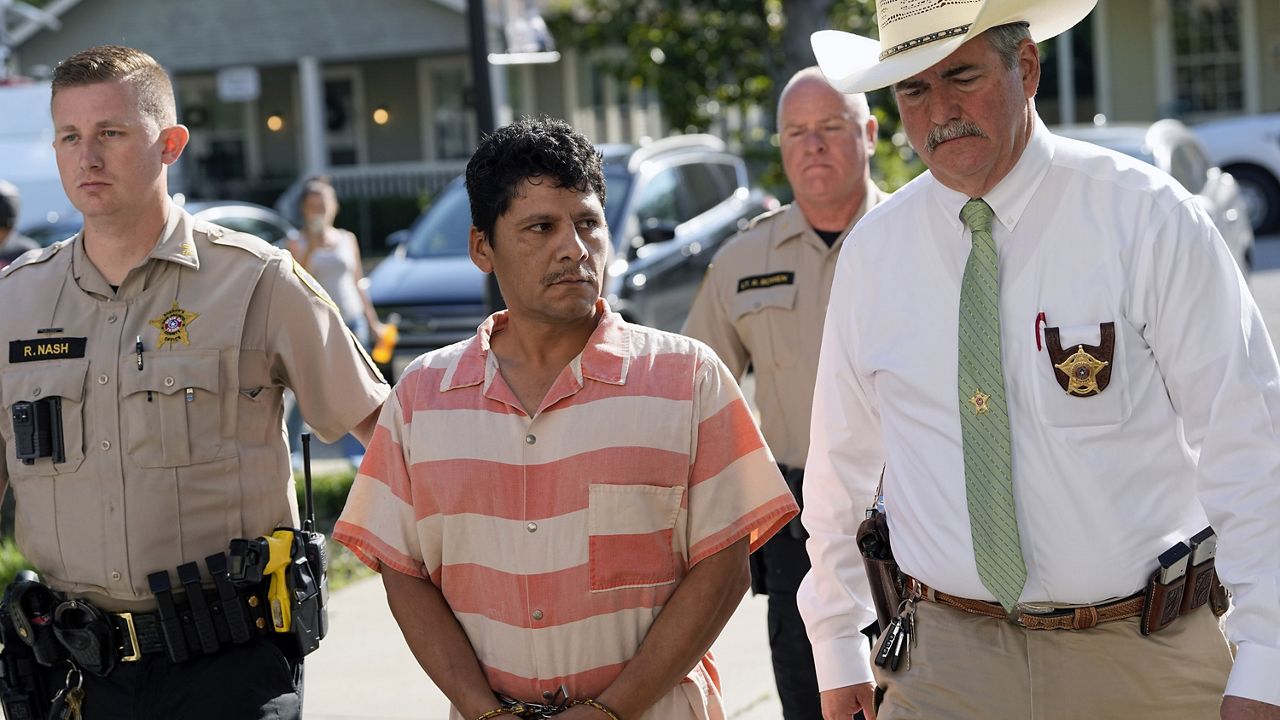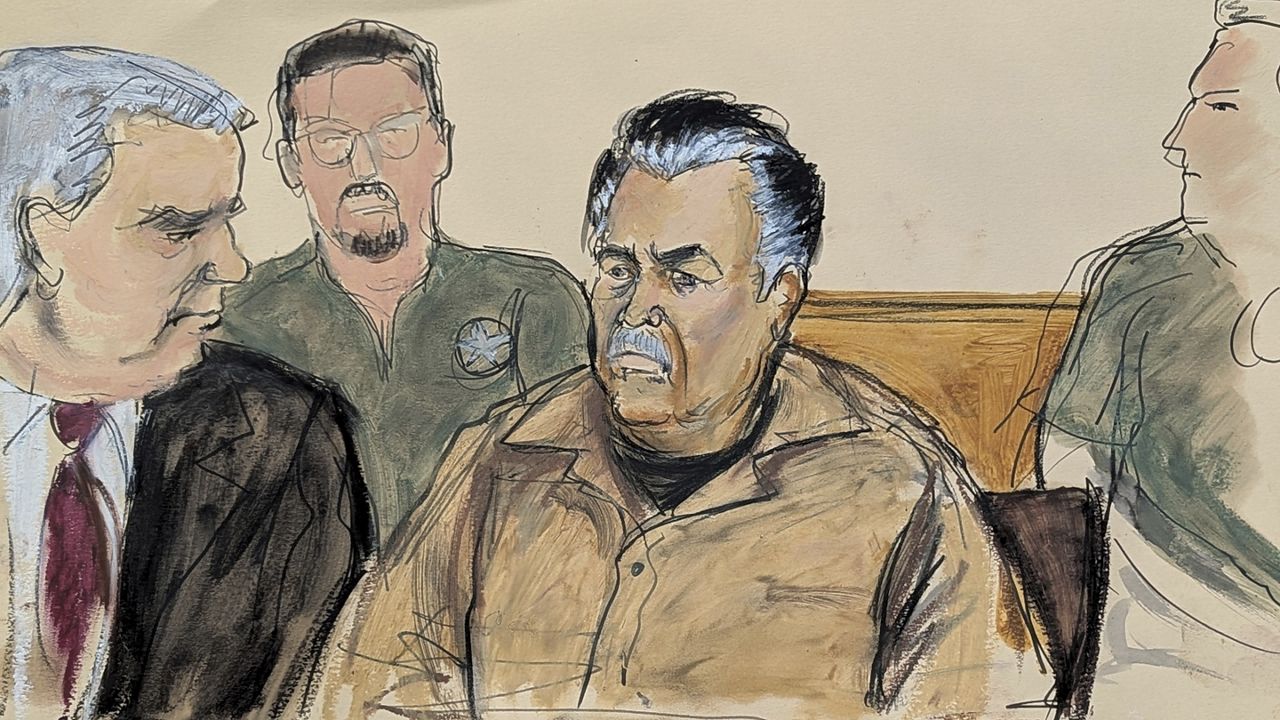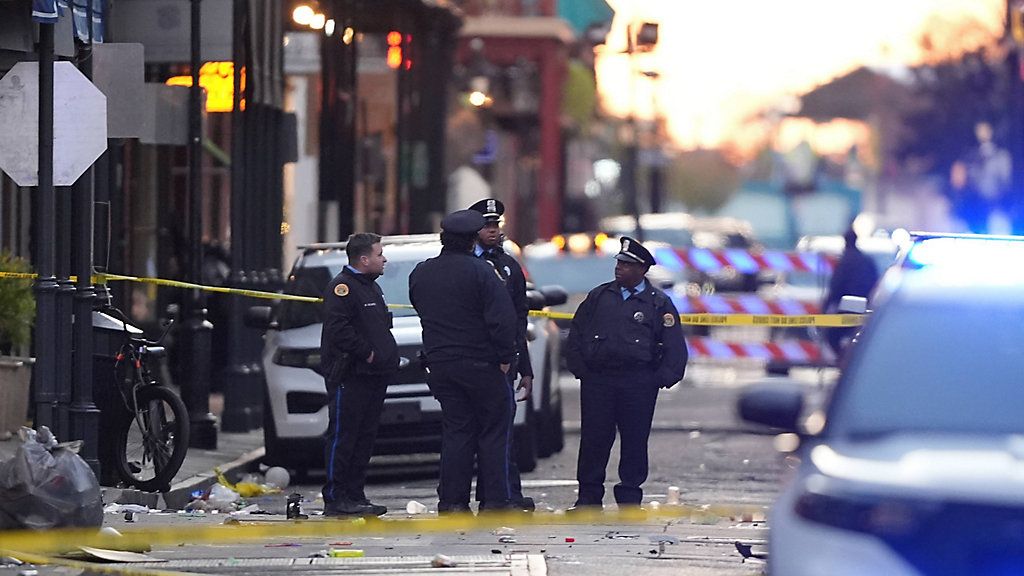HOUSTON (AP) — Attorneys for the man accused of killing five of his neighbors after storming into their Texas home suggested on Thursday that not all has been revealed about what led up to the deadly shooting and that the suspect was someone who was generous and well-liked.
Francisco Oropeza, 38, made his initial court appearance Thursday following his May 2 arrest after a four-day manhunt. He is facing five charges of murder for the April 28 shooting deaths in a rural neighborhood in Cleveland, located 45 miles (72 km) northeast of Houston. Authorities allege Oropeza, after being asked by his neighbors to stop firing his AR-style rifle because a baby was trying to sleep, responded by charging into their home and killing five people, including a 9-year-old boy. All five victims were from Honduras.
Oropeza, dressed in a faded pink and white striped prison uniform, did not say anything to reporters as he was led into a courthouse in Coldspring, Texas, located about 60 miles (97 km) north of Houston. He also did not speak during the procedural court hearing. Oropeza is a Mexican national who has been deported four times between 2009 and 2016, U.S. immigration officials said.
After the hearing, his attorneys said it’s still too early to know what happened on the night of the killings and that tension between Oropeza and his neighbors had been building for quite some time.
“The initial story about asking him not to shoot his gun in the backyard because a baby was sleeping is probably not going to prove to be an accurate version of the events,” said Anthony Osso, one of Oropeza’s attorneys.
Osso said that while the killings have been presented as a mass shooting, it will end up being “a different kind of situation.”
Wilson Garcia, whose wife and 9-year-old son were two of the people killed, previously told reporters he and two others had “respectfully” asked Oropeza if he could shoot farther away from his home because Garcia’s newborn son was trying to sleep.
“He told us he was on his property and he could do what he wanted,” Garcia had said after a vigil at his son’s school on April 30.
Osso said Oropeza and his neighbors had been friends. Oropeza, a tradesman, would help anyone in the neighborhood who needed any electrical or plumbing work done, his lawyers said.
The relationship between Oropeza and his neighbors “started to go downhill” after the neighbors’ dogs went into Oropeza’s yard and killed his family’s sheep and chickens, Osso said.
Lisa Andrews, another of Oropeza’s attorneys, said what led up to the shooting is “much more complicated and much different a picture than that original witness statement.”
Both Andrews and Osso declined to comment on what happened the night of the shooting or what Oropeza might have told them about it.
Garcia said he never had problems with Oropeza and that their wives sometimes talked. He said Oropeza had once helped him cut down a tree.
Rob Freyer, the first assistant district attorney with the San Jacinto County district attorney’s office, declined to comment on the claims by Oropeza’s attorneys that not all has been revealed about what led up to the shooting.
“It was a massacre. The whole world knows that ... It was a tragedy,” Freyer said.
Andrews said she expects the murder charges against Oropeza to be upgraded to capital murder, which would make him eligible for the death penalty.
San Jacinto County District Attorney Todd Dillon said Oropeza’s case will likely not be presented to a grand jury until next month.
Oropeza’s next court date is Aug. 10. His wife and one of Oropeza’s friends have each been charged with hindering the apprehension or prosecution of a known felon.










